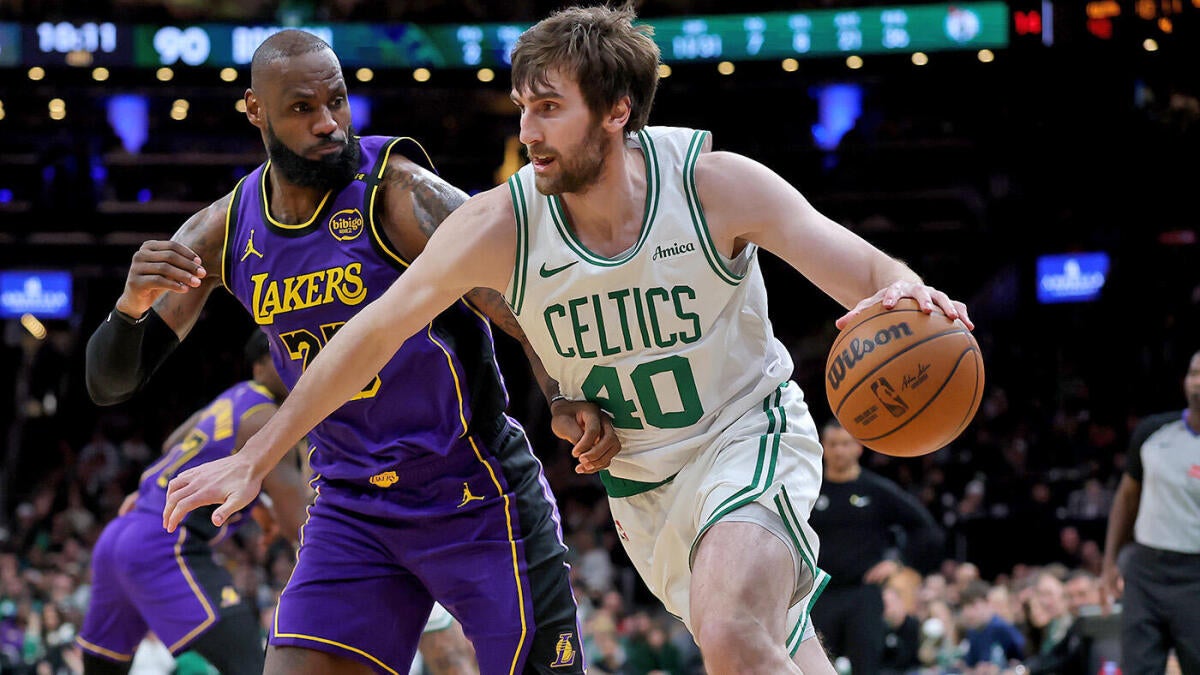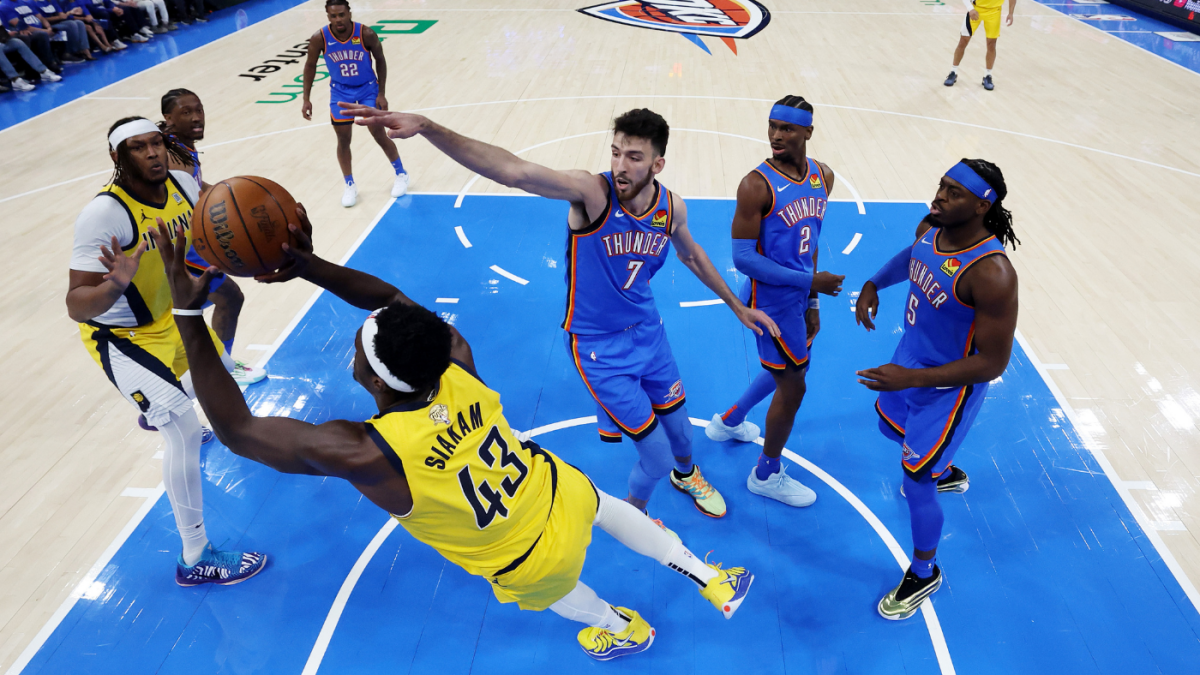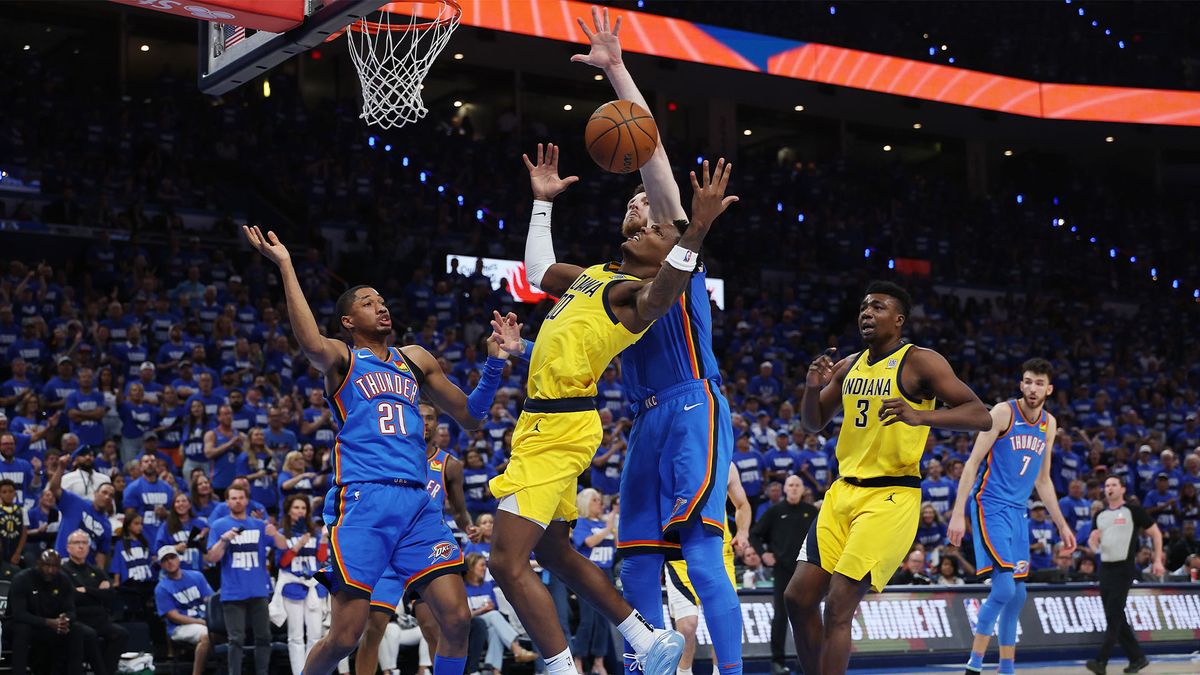There are a lot of things about this upcoming offseason that we don’t know. We don’t know which stars are going to move. We don’t know which Eastern Conference teams are going to try to fill the vacuum left behind by the Boston Celtics. We don’t know who the Knicks are going to hire as their next coach.
Here is one thing we do know with almost absolute certainty: the Los Angeles Lakers are going to get a center. Well, scratch that. The Los Angeles Lakers are going to get multiple centers. We know that because they tried to trade for Mark Williams at the deadline and didn’t because of a failed medical exam. We know that because they played the entire second half of a playoff game against Rudy Gobert, Julius Randle and Naz Reid with the same five players on the floor, none of whom were centers. We know that because, quite literally, the Lakers do not have a center under contract at this moment.
LeBron James still deserves a max salary, but Lakers probably need him to take less to compete for NBA title
Sam Quinn
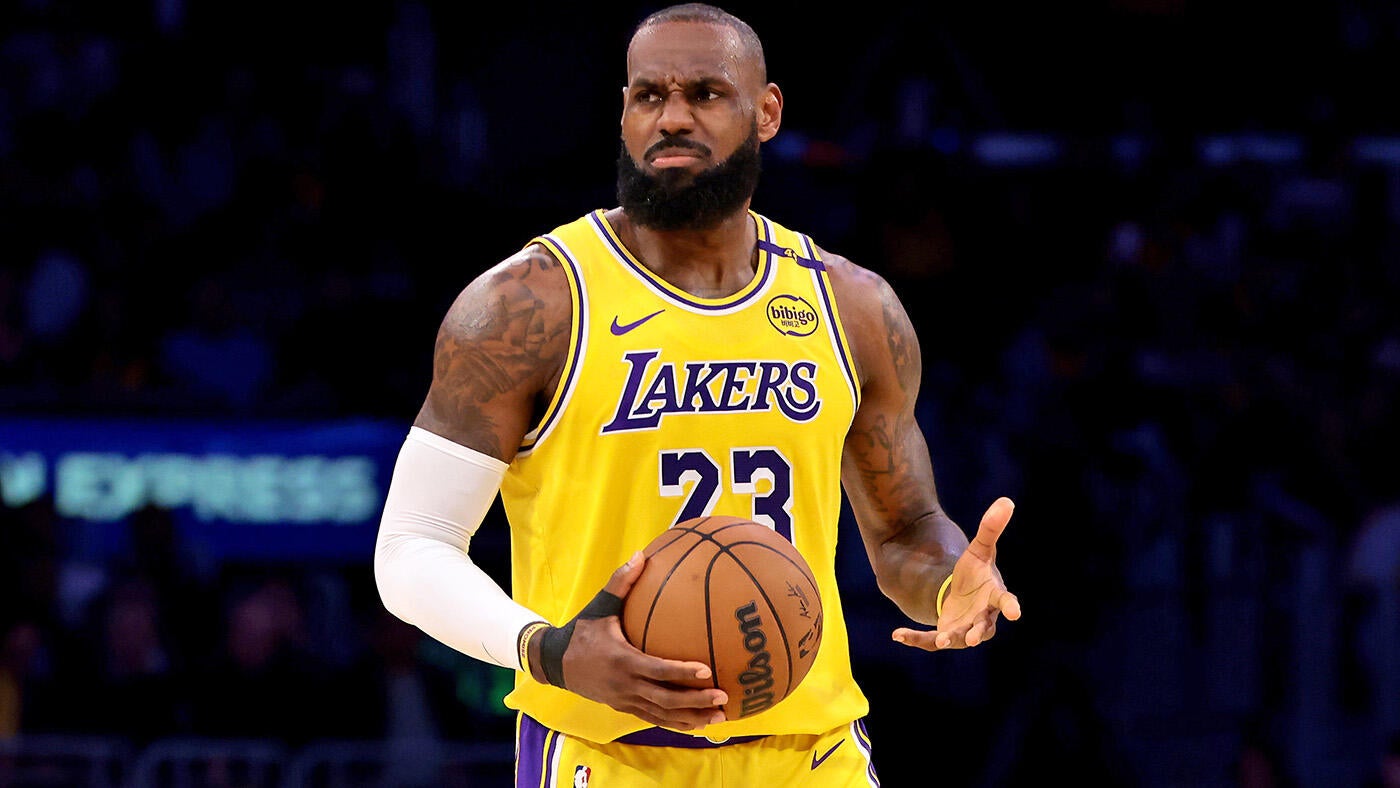
Everything else about this offseason is a mystery. We know very little about who is going to target what beyond the needs their depth charts and balance sheets would suggest. But the Lakers are going center hunting. Rob Pelinka told us as much in May. The question now is which center, or centers, they will actually acquire.
Fortunately, the Williams trade gave us a bit of a template for what the Lakers are looking for here. In order of priority, these are the traits that the Lakers probably want out of their starting center next season.
- He has to be able to protect the basket. This is a non-negotiable. The Lakers did fare better defensively with small lineups than they had any right to a season ago, but the Minnesota series exposed just how vulnerable they are near the basket.
- He probably needs to be a lob-catcher on offense. This is not necessarily absolute. There’s definite value in five-out spacing if there’s a shooting big man available, but Luka Dončić is arguably the greatest lob-passer in NBA history. It is his favorite pass. He made the NBA Finals with Daniel Gafford and Dereck Lively as his big men. This is the kind of center he wants, and he is the franchise player now. Making him happy is a priority.
- He should be a strong defensive rebounder. The Lakers actually acquitted themselves fairly well on the glass without strong center play last season, ranking 16th in rebounding rate after the Dončić trade. Dončić and LeBron James are very strong positional rebounders, but we also need to be realistic about the sort of roster the Lakers are going to have. No defense with Dončić and Austin Reaves is going to be a strength. The Lakers need to at least be able to end possessions when they force misses.
- The Lakers probably need their next center to be at least, say, a 60% free-throw shooter. This is a team that’s going to live on individual offensive creation. The last thing it needs is for an opposing defense to start hacking a bad free-throw shooter and taking the ball out of Dončić’s hands. If this center can get fouled off the floor, it hardly matters how good he is at anything else.
- In a perfect world, any centers the Lakers acquire will either be a veteran on an expiring contract, a young center on a rookie-scale deal or a bargain locked up for multiple years at a low price. This is because the Lakers are currently positioned to have max cap space in 2026 and would ideally prefer not to compromise that.
- Offensive rebounding and hard screen-setting matter, but they’re not the be-all and end-all here.
- Age counts, but the right player at the right price is what matters most. The Lakers can handle a stopgap if it’s the right stopgap, so youth is a luxury here. The same probably goes for 3-point shooting. Would it be nice? Yea. But the Lakers will have five-out looks available that don’t include a center, so it’s not worth prioritizing.
So that’s what the Lakers are looking for. Now, it’s time to discuss who they might be looking for. Below, we’ll cover 22 names. They range from players that almost certainly aren’t available to ones the Lakers could secure with a single phone call. The goal here is to find a center rotation that the Lakers can plausibly afford. So while we will cover names that probably aren’t on the table, we’ll go into a bit more depth on the ones that are, addressing their pros and cons as possible Lakers. One last note: We will not be covering members of the 2024-25 Lakers. Jaxson Hayes, Christian Koloko and Trey Jemison could all be on the team in some capacity, but for now, we will assume that none would start the season as anything more than a No. 3 big man.
Free agent candidates
Clint Capela
Pros: The quintessential rim-protector and rim-runner. Until last season, he hovered around the top 10 in the NBA in dunks every year. He’s been a consistently good defender, but just as importantly, he’s been a fairly versatile one, capable of protecting the basket but also hanging on the perimeter when switches have forced him to. One of the few players ever to lead the NBA in offensive rebounding rate and defensive rebounding rate in a single season. He’s been an obvious Dončić fit for years. Dallas tried to trade for him in 2023. He’s probably gettable for the taxpayer mid-level exception.
Cons: He’s 31 and slipping on just about every front. He played backup minutes last season, but his per-possession stats have all slipped from his peak. He’s a good rim-protector now, not a great one. He’s lost a bit of the athleticism that meant so much as a lob finisher. He’s no longer an elite rebounder on either end. Only a 54.4% career free-throw shooter. He probably has to be a backup at this stage of his career, which is why he’s gettable at the tax mid-level at all.
Brook Lopez
Pros: Has been arguably the NBA’s best stationary rim-protector since he left the Lakers in 2018. Has led the NBA in contested shots per game in every healthy season he’s played for the Bucks. He’s a consistently average 3-point shooter, which is a huge plus at center. Never posts gaudy rebounding totals himself, but is a better team rebounder than he looks, thanks to his strong box-out habits. Actually makes his free throws.
Cons: Can’t move. You’re playing drop-coverage if he’s in the game, and you’re playing drop-coverage without Giannis Antetokounmpo protecting him. Makes sense in LeBron-only minutes as a spacer, but is too ground-bound at this point to run much pick-and-roll with Dončić. His post-offense isn’t nearly the weapon it was at his peak and was actually below-average in terms of efficiency last season. Another player who probably has to be a backup.
Steven Adams
Pros: The best offensive rebounder on planet Earth. Maybe the best per-minute team rebounder as well, given how immovable he is when boxing out and how consistently he bats balls out to teammates. Among the very best screeners in basketball. Still a good rim-protector. A deceptively valuable passer in the right contexts.
Cons: Struggles to finish on offense. Not especially versatile defensively anymore. A bad free-throw shooter who has trended down since leaving Oklahoma City. A very low-minutes player at this point that certainly can’t start. Probably not gettable for the taxpayer mid-level exception, considering how many paths Houston has to creating extra cap flexibility.
2025 NBA free agency guide: Complete list of every team’s free agents and contract options for this summer
Robby Kalland
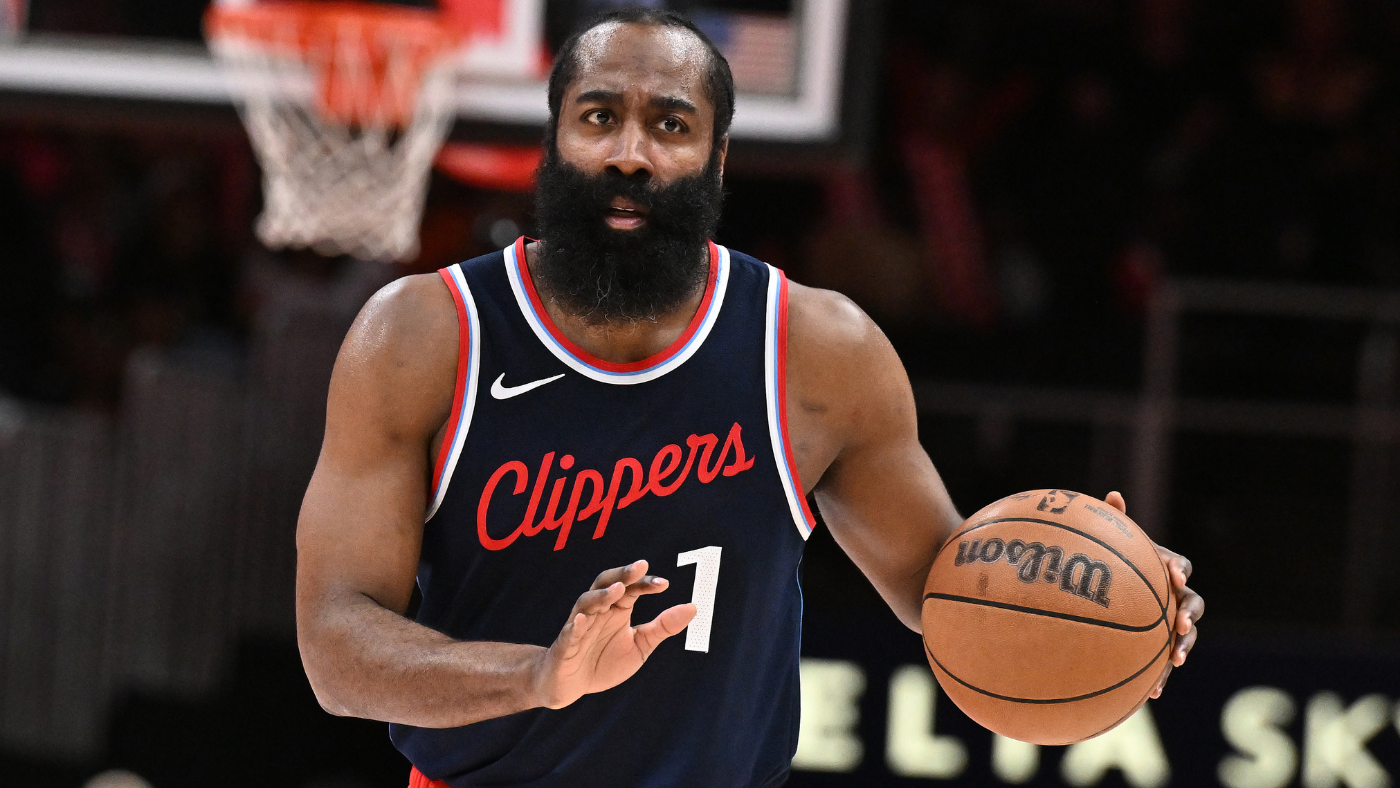
Al Horford
Pros: Even at 38, he was still perhaps the best defensive player on the No. 4 defense in the NBA last season in Boston. Still an excellent switch defender who can hold up in isolation against basically anyone. Immovable in the post. Philadelphia was once so scared of him that it gave him a max contract in part to ensure that he couldn’t defend Joel Embiid anymore. The best shooting big available at this price point. Sorely underrated passer. One of the smartest players of his generation. An absolutely beloved teammate almost everywhere he’s been.
Cons: He’s entering his age-39 season, so there’s no telling how much longer he’ll be able to play at this level. Still good enough to warrant bigger offers than the taxpayer mid-level, even if it’s only a one-year deal. In part because of how much time he spends on the perimeter, he’s never been a valuable rebounder. He’s not at all a lob threat for Dončić. While he’s by no means a bad rim-protector, that has never been his defensive strength. He’s a Celtic, and at this point in his career, there might not be enough upside for him to risk jeopardizing his standing in Boston by wearing the purple and gold.
Luke Kornet
Pros: A stellar rim-protector on his length alone. Kornet has a 7-6 wingspan and uses it as aggressively as any player in basketball. Enjoy this look at the “Kornet Kontest,” a move in which he jumps on shots he has no plausible chance of contesting just to obscure the shooter’s view of the rim. That giant wingspan gives him an extremely wide catch radius on lob passes. Only six players who played as many or fewer minutes as he did racked up as many dunks as him (86) last season. A surprisingly effective offensive rebounder given how skinny he is. He shot 3s fairly well early in his career. He’s abandoned them, and that’s probably where the offensive rebounding comes from, but perhaps it’s a skill he could revisit in a different context. He is an absolute metrics darling who shines in just about every all-in-one metric.
Cons: Has never played 20 minutes per game in his career. Barely rebounds on defense. The degree of difficulty on his pick-and-roll scoring was, frankly, laughable. A ton of his points came on free runs to the basket that were the result of Boston’s historic spacing. It’s less clear how he’d navigate the tighter quarters that would come with running pick-and-roll with Dončić against the best Western Conference defenses (specifically Oklahoma City, which takes away all pocket passes). His playoff samples are pretty small. Joe Mazzulla didn’t use him much in the 2024 playoff run. He got more time this year, but that was partially a function of Kristaps Porziņģis being physically compromised.
Trade candidates
Walker Kessler
Pros: The best pure rim-protector that we’ll cover, and among the best in all of basketball. More mobile defensively than he gets credit for. He’s so good near the basket that you’d never aim to run a switch-heavy scheme against him, but he can hold his own if need be. An absolute monster of an offensive rebounder who’s plenty good on the defensive glass as well. Has much, much more room to grow offensively. Except perhaps his brief overlap with Mike Conley as a rookie, he’s never had even an average starting-level point guard. He has a wide catch radius for lobs, but he can also put the ball on the deck a bit. He has a strong sense of timing as a roller, capable of slowing down to suit coverage or speeding up to seal an opposing big to create a driving lane for his teammate. There’s even been some thought that he could eventually develop a 3-point shot, though that hasn’t manifested yet. He’s incredibly cheap this season, the last of his rookie deal, at around $4.9 million. That would also give him a low cap hold as a 2026 restricted free agent, and the Jazz have enough financial flexibility that they could absorb a bit of salary in a trade if need be.
Cons: The Jazz are notoriously demanding in trades. The price in the past has been at least two first-round picks, which the Lakers don’t have. Could one first, three swaps and the removal of protections on the 2027 pick the Lakers already owe them even be enough? Does Dalton Knecht get it across the finish line? Kessler probably costs every trade chip the Lakers have, and even then, it’s not certain that he’s gettable. He’s a bad free-throw shooter at 53.7% for his career. His block rate also decreased a bit with heavier minutes a season ago. He’s never played in the playoffs. Turns the ball over more than you’d like out of a center.
Nic Claxton
Pros: Checks several important defensive boxes. He’s been a strong rim-protector for several years, but he’s at his best as a switch-defender on the perimeter. He’d unlock a lot of schematic versatility for the Lakers in that way. He’s a great leaper who can cover a lot of distance in the air, which Dončić can obviously take advantage of. However, he’s also a strong playmaker, especially as a short-roller. He’d make blitzing Dončić off of screens much more dangerous because he’s one of the few centers who can really take advantage of a 4-on-3 as a passer. He probably wouldn’t cost quite as much as Kessler would, so he’s a bit more attainable, and his contract descends in value in each of the next three seasons.
Cons: He’s never had great hands, which is less than ideal when trying to catch sky-high Dončić lobs. He’s skinny and his post defensive numbers have never been great, which is less than ideal in Nikola Jokić’s conference. He doesn’t get his hands on the ball quite as much as you’d like for a player as athletic as he is. His deflection numbers have been pedestrian over the past two years and his block numbers declined last season. Was that the result of playing for a bad team or something more? He’s had some medical red flags in the past, and he’s even acknowledged the long-term nature of a back injury he dealt with last season. As with so many other bigs we’ve covered, he’s a shaky free-throw shooter.
Jarrett Allen
Pros: The best overall player among the plausibly available targets. He combines a lot of the best traits of Kessler and Claxton. He’s a great rim-protector, and metrics have suggested he’s closer to Evan Mobley defensively than his reputation would seem. He’s not great on the perimeter, but he can hold up, and he’s stronger physically than Claxton. He’s a great lob-catcher, a very good passer by center standards, can do a little bit with the ball in his hands, and, in a trait that has become too rare so far on this list, actually makes his free throws. While his market-rate extension will kick in for the 2026-27 season, he’s still pretty cheap next season at $20 million.
Cons: Do the Lakers even have anything Cleveland would want in a trade? The thought that the Cavaliers would break up their core this offseason is based on the premise that they need to save money, which the Lakers can’t help them with, and that they might want to turn Allen (or Darius Garland) into a high-end wing, which the Lakers don’t have. This would have to be a three-team trade, and there’s no obvious partner. Allen has also had a pretty shaky playoff history. Mitchell Robinson bullied him in 2023. The Pacers gave him real problems in the second round this year. If he struggles against five-out teams but can also get beaten up physically, it’s worth asking if he’s going to be capable of handling a four-round gauntlet in which he’d face a variety of roster types, especially on a roster without Mobley.
Kristaps Porziņģis
Pros: An elite shot-making center. He can hang around the perimeter and make 3s, but if you try to switch against him, he’s going to punish smaller defenders in both the mid-range and near the basket. He gets to the line and makes his free throws at an elite rate. Has a great catch radius with his long arms, which also makes him a great rim protector. On an expiring contract, so he won’t impede the 2026 cap space plans.
Cons: The Lakers can’t save the Celtics money, and you should always be skeptical that Boston is willing to deal with the Lakers. His medical history is just too scary to ignore. He can’t be trusted. He and Dončić played together in Dallas and it didn’t go especially well. He doesn’t move very well at this point either, and he’d obviously be playing with far less defensive support than he had on a great Celtics team.
Ultimate NBA summer trade guide: 100 players, split into 11 tiers, who could be dealt during 2025 offseason
Sam Quinn
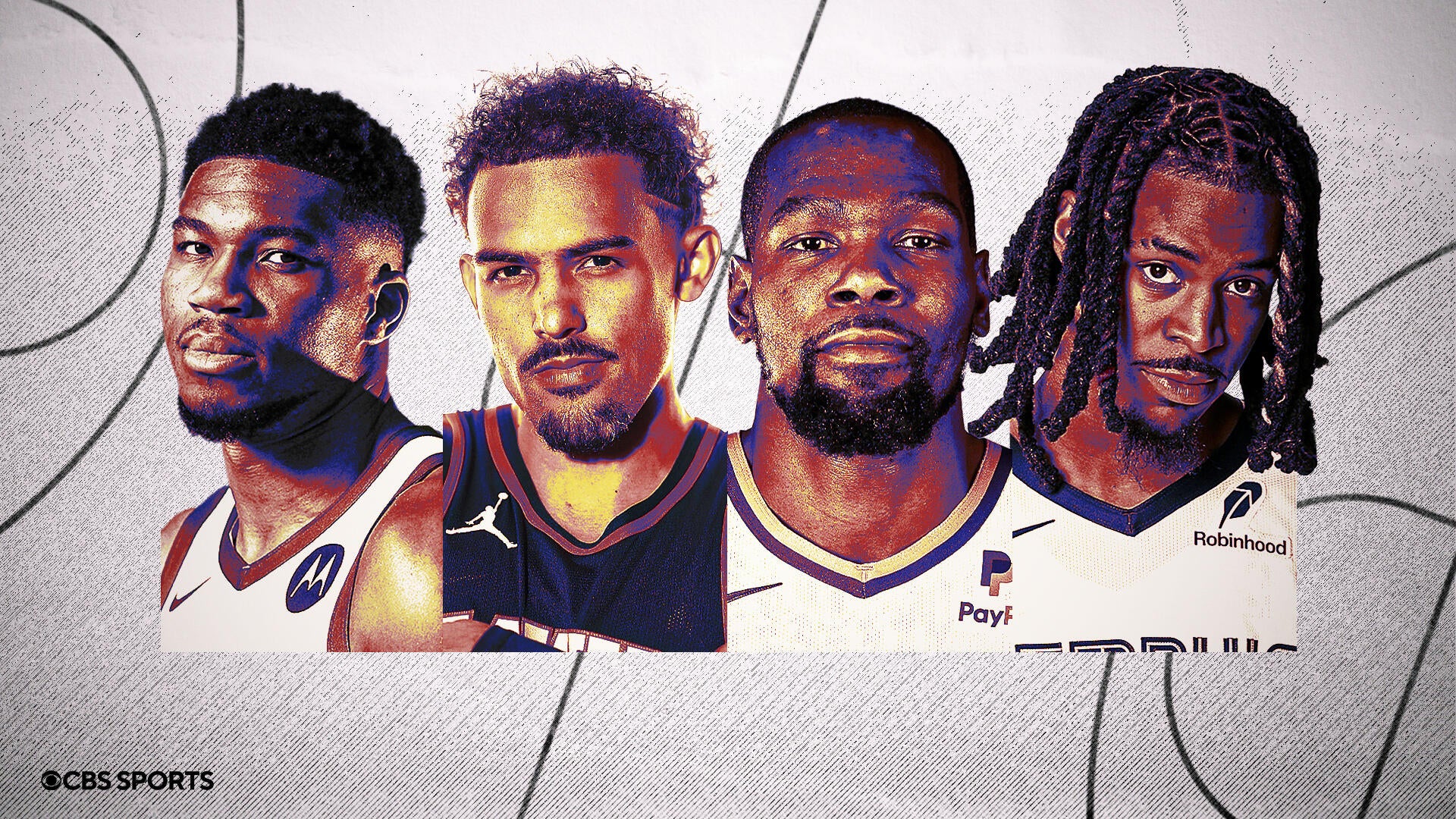
Deandre Ayton
Pros: I want you to stop and think of nothing besides the 2021 playoffs, when Ayton looked like he was becoming one of the best centers in the NBA. His defense was great on all fronts: strong at the rim, versatile enough to hang on the perimeter and he even handled Jokić as well across a series as anyone ever has. He caught lobs, set screens and was generally more willing than ever to do the dirty work a center needs to do to compete for titles. He’s in a contract year now. If you just pretend that basically everything that happened after that postseason was a dream and hope that James can maximize him as he has so many teammates in the past, maybe there’s hope that you can find that player again. And if not? He won’t cost much in a trade, and the Lakers can simply let him walk after the season.
Cons: The other 95% or so of his career actually happened. Ayton doesn’t want to do the dirty work. He wants to shoot mid-range jumpers. He never gets to the line. His defense comes and goes. He has a bad attitude. Maybe the version of him that existed four springs ago is still in there, but finding him would be no easy task, and his $35.5 million contract would cost the Lakers virtually all of their tradable salary. James has worked miracles with teammates before, but this would require some of his best work yet in the locker room.
Daniel Gafford
Pros: Gafford fit so well with Dončić in Dallas that Slovenia actually considered making him a naturalized citizen so the two could play together at the Olympics. He is an absolutely perfect pick-and-roll partner: agile enough to navigate packed pants, bouncy enough to catch the highest of lobs, and strong enough to finish through contact. He’s grown into a strong rim-protector in Dallas after shaky defensive stints in Chicago and Washington. He’s a good offensive rebounder, and most of the all-in-one metrics adore him. The Mavericks are loaded in the frontcourt and need to either trade for a guard or get the assets from someone else to do so later. Gafford will be a free agent in 2026 and it’s hard to imagine the Mavericks having the money to re-sign him at a starter rate given all of their other commitments. However, his 2025-26 salary is relatively low ($14.3 million), so his 2026 cap hold will be low enough to preserve cap space if the Lakers get him.
Cons: Would the Mavericks ever deal with the Lakers again? You have to imagine the Lakers asked about Gafford in the Dončić negotiations, though admittedly, circumstances in Dallas have changed a fair bit since then. The bigger questions here are on Gafford’s end. The Lakers would have to pay a starter’s price in a trade for him, but he’s always been more of a 20-25 minute player, and the Mavericks leaned much more heavily on Dereck Lively II in the 2024 playoffs. He’s not a defensive rebounder, and he’s not a great pick-and-roll defender either. He’s a nice tool to have in a two-center setup, but he might just be overqualified for a bench role and underqualified as a full-time starter.
Nikola Vučević
Pros: He found his shot again after some shaky years from deep in Chicago. He’s still a solid enough post scorer and a strong rebounder and playmaker. He makes his free throws. He never misses games. He’s one of the few centers we’ll cover that could carry the team for a quarter. He could probably be had for a relatively reasonable price on an expiring, $21.5 million deal. Defensive metrics have typically been kinder to him than the eye test.
Cons: That metric point doesn’t mean much, considering the eye-test more or less paints him as unplayable defensively against playoff offenses. He’s neither mobile nor a rim protector. He knows where to be, but he’s not Nikola Jokić. He doesn’t make up for his physical limitations by racking up deflections, dominating on the glass and being arguably the smartest player in the world. He’s a defensive liability, and his offense doesn’t really synergize with Dončić’s in any helpful ways. He’s not going to be a lob threat. He made his 3s last year, but he doesn’t just want to camp out from deep and watch his teammates work. This is only a fit if the Lakers miss on everyone else and need a center-sized body.
Goga Bitadze
Pros: Solid rim-protection and a favorite of many defensive metrics. A high-IQ defender with good reflexes, he rarely gives up easy baskets and is pretty adaptable within the flow of a possession. Has cut down on his fouling, which was a problem in Indiana. He’s quicker than he seems, especially moving in a straight line. A good rebounder on both ends of the floor. He makes the easy passes consistently and he’s really grown as a finisher with the Magic as well. He’s not a great free-throw shooter, but he’s good enough not to get hacked. He has two cheap years left on his contract, but the Magic, facing a cap crunch and with several other bigs in the building, might be open to moving him for a reasonable price.
Cons: Though he recovers well defensively, he doesn’t have great lateral quickness. He’s also not especially big for a center, and he doesn’t have much of a vertical either. This limits his defensive upside and prevents him from being the vertical threat Dončić needs on lobs. He’s spent the past few seasons in a defensive nirvana in Orlando. While the on-off metrics are favorable on this front, it’s still hard to know how he’d function anchoring a defense without as much talent and institutional commitment as the Magic have. The Lakers don’t have Jalen Suggs and Jonathan Isaac. It’s also not especially easy to construct a trade here. Bitadze isn’t good enough to warrant a first-round pick. Would the Magic want a swap? Could the Lakers try to entice Orlando by sending the Magic expiring contracts and taking back Kentavious Caldwell-Pope off of a bad year? That cuts into the cap space vision next summer. Maybe Dalton Knecht would interest them, but that poses salary-matching issues for the Lakers, while the Magic can’t take back a bigger contract. Still, Knecht could help solve their long-time shooting woes.
Robert Williams III
Pros: He would’ve won Defensive Player of the Year in 2022 if he’d stayed healthy. His rim-protection numbers remain excellent. His per-minute deflection numbers are excellent and he’s athletic enough to play on the perimeter, which he did frequently at his Boston peak. He has uniquely useful proportions as a lob-threat: he’s only 6-9 and has a low center of gravity, so he can move through the paint gracefully, but he has a 7-6 wingspan and a great vertical, so he can still catch passes that aren’t perfect. He’s a great passer as well, probably even a shade better than Claxton in short-roll situations. He has a $13.3 million expiring contract, so he’s reasonably cheap and won’t impact next year’s cap space. Given Portland’s center logjam, he likely wouldn’t cost too much in a trade either.
Cons: He’s played 61 games in the past three seasons. He’s just not medically trustworthy. At the very least, he should never play another back-to-back, and his minutes need to be watched closely in a high-intensity playoff setting. Some team probably has the right combination of depth and assets to make a play for Williams as a luxury, but the Lakers only have so many bullets to fire. It’d be hard to justify using any of them on someone they couldn’t rely on to stay on the court. He also played his best defense in Boston next to another big man in Horford. The Lakers are never going to play two bigs.
Mark Williams
Pros: We know the Lakers like him because they literally traded for him in February. They rescinded the deal in February due to medical concerns. Had the deadline been two weeks later, they might have gone back to the table and tried to land him at a reduced price. Maybe that’s something they’d revisit in the offseason. Williams is a great all-around pick-and-roll big man. He’s a lob threat, yes, but he can do plenty with the ball in his hands on his own. He has the tools to be a terrific defender. That hasn’t happened yet, but remember, he’s been playing unserious basketball in Charlotte. P.J. Washington didn’t defend there either and look how he’s turned out in Dallas. Like Kessler, he’s in the final year of his rookie deal, so he’s cheap next season and has a low cap hold for 2026 free agency.
Cons: There was clearly bad blood between the Hornets and Lakers after the deal was rescinded because Charlotte reportedly looked into ways of forcing the deal through. Would they even be willing to go back to the table here? Williams’ fit defensively was also at least somewhat theoretical. He has the tools to be a high-level defender. He’s never done it consistently yet. And of course, those medical concerns were real. We know for a fact that the Lakers didn’t trust his body enough to pass him on a physical at the price they paid. We don’t know if there’s any price they’d be willing to pay given those concerns.
Unlikely to be available
We’ve already gone in depth on the plausible and semi-plausible candidates, so we’re going to speed-run through the names that have popped up in real rumors or among fans that just aren’t likely to be gettable.
- Myles Turner has been a target several times in the past, but he’s just going to be too expensive. Even if the Pacers would let him go after their Finals run (which they won’t), the Lakers can’t create the $30 million or so in cap space that they’d need, and they probably can’t deal with the first-apron hard cap that would come with a sign-and-trade.
- All of the same problems apply to Naz Reid, though he’ll wind up being cheaper. The Timberwolves aren’t helping the Lakers in a sign-and-trade and they aren’t creating cap space.
- Speaking of Minnesota, there is a potential path for Rudy Gobert to get traded in the name of saving money to spend on their younger free agents. But the Lakers don’t have much the Timberwolves would want, and given his age and salary, it doesn’t make much sense anyway.
- The Heat aren’t trading Bam Adebayo. He’s the foundation of their culture. Even if they did, the Lakers don’t have anything the Heat would want. Why trade for Austin Reaves when you have Tyler Herro?
- Jalen Duren was a popular name around the deadline. He’d appeal for the same reasons Williams did, but comes with similar drawbacks (outside of the medical stuff). He’s better in theory than in practice, but the Pistons played so well with him down the stretch that they’ll extend him and see what the next few years bring. They’re not breaking up their team after a feel-good season.
- Jakob Poeltl is showing up in rumors, but Toronto doesn’t have another true center on the roster and the Raptors are clearly trying to win after the Brandon Ingram trade. They have no reason to give him away.
- Jaylin Williams checks a lot of boxes, and he’s been crowded out of playing time in Oklahoma City. However, Isaiah Hartenstein only has one guaranteed year left on his deal. In all likelihood, the Thunder will decline their team option on Williams, make him a restricted free agent, re-sign him to a favorable long-term deal, and then plan for him to replace Hartenstein once Chet Holmgren and Jalen Williams get expensive and they need to cut some costs.
So… what should the Lakers do?
Only a handful of the trade candidates are worth the meager draft capital the Lakers have remaining. If there’s a path to Allen, take it. He’s an All-Star. But that’s unlikely.
If there’s a path to Kessler? He’s probably the bubble candidate. It would probably take everything the Lakers have — 2031 unprotected, 2026, 2030 and 2032 swaps and the removal of the top-four protection on 2027 already going to Utah — to get him. That sort of trade is an all-in push. For that to be justifiable, one of two things probably needs to happen: either LeBron James takes a pay cut to open up the full mid-level exception, or the Jazz take on a contract (ideally Jarred Vanderbilt, acceptably Maxi Kleber) to accomplish the same goal. If the Lakers are going all-in here and now, they need to get enough bang for their buck.
Claxton might be worth the 2031 pick on its own, but without the immediate benefit of the low cap figure this year and with less room to grow for the long haul, shouldn’t get the swaps or Knecht in a deal. However, given Brooklyn’s cap flexibility, perhaps there’s a compromise here where the Nets get more draft capital but also help the Lakers clear that full mid-level.
These are the only scenarios in which I’d consider moving the 2031 pick. Otherwise, I’m holding it, waiting until next summer, and shopping around with it and the 2033 pick that unlocks then. If the pick isn’t moving and the Lakers can’t find a way to access the full mid-level exception, the first order of business should be using the tax mid-level for one of the free agents we covered. Kornet is probably the best of the five, but Capela seems to be the likeliest based on the reporting thus far. He at least has a track record as a starter, though given the decline he’s shown of late and just how favorably the numbers view Kornet, I suspect Capela is a less valuable player next season.
If the Lakers sign one of these mid-level centers, it has to be as part of a platoon. Ayton is probably the most appealing of the cheaper trade options, just given the upside he brings, but making the money work without Rui Hachimura in the deal would be tough. Would the Lakers take that plunge? Probably only as a last resort. A deal centered around Knecht and Bitadze would be preferable at that point, and a third team could be looped in to help out financially. That would also leave the Lakers with a matching salary leftover at the deadline. If they wanted to dangle their 2031 pick for help on the perimeter, then they could do so.
The truth is, there’s no single path that makes sense for the Lakers. They need multiple centers, and it’s not clear how gettable some of the best players on this list will be. For now, the Lakers are likely negotiating for several of them. They will adapt based on what’s available, and there are dozens of viable paths they could take. In the end, though, it’d be pretty surprising if one or two of these players isn’t on the team next season. Adding centers is the single most important goal for the Lakers this offseason.
